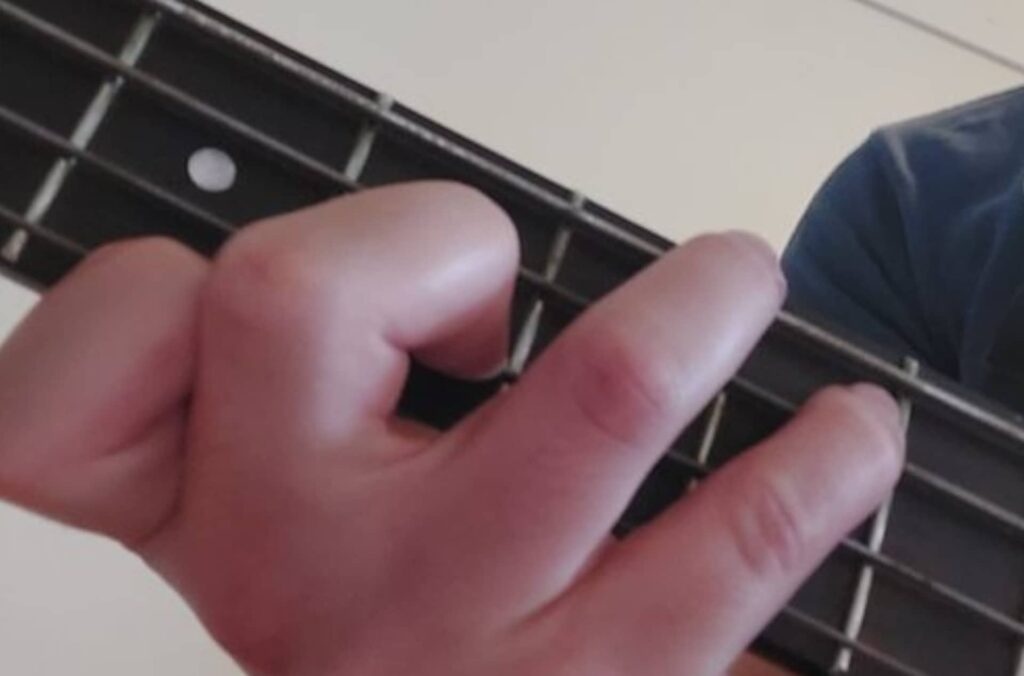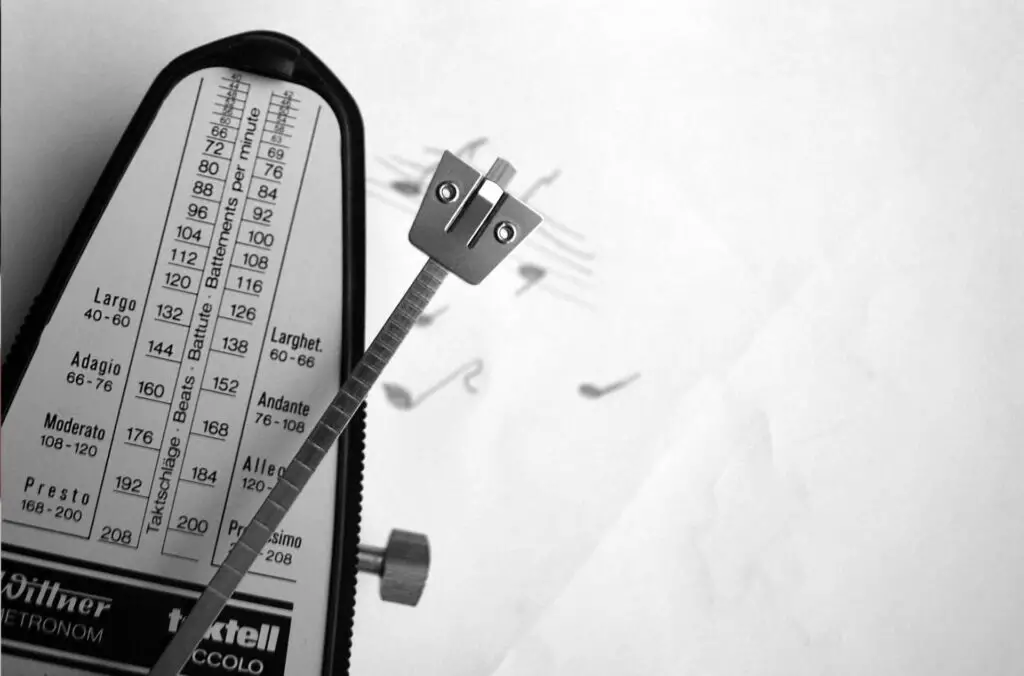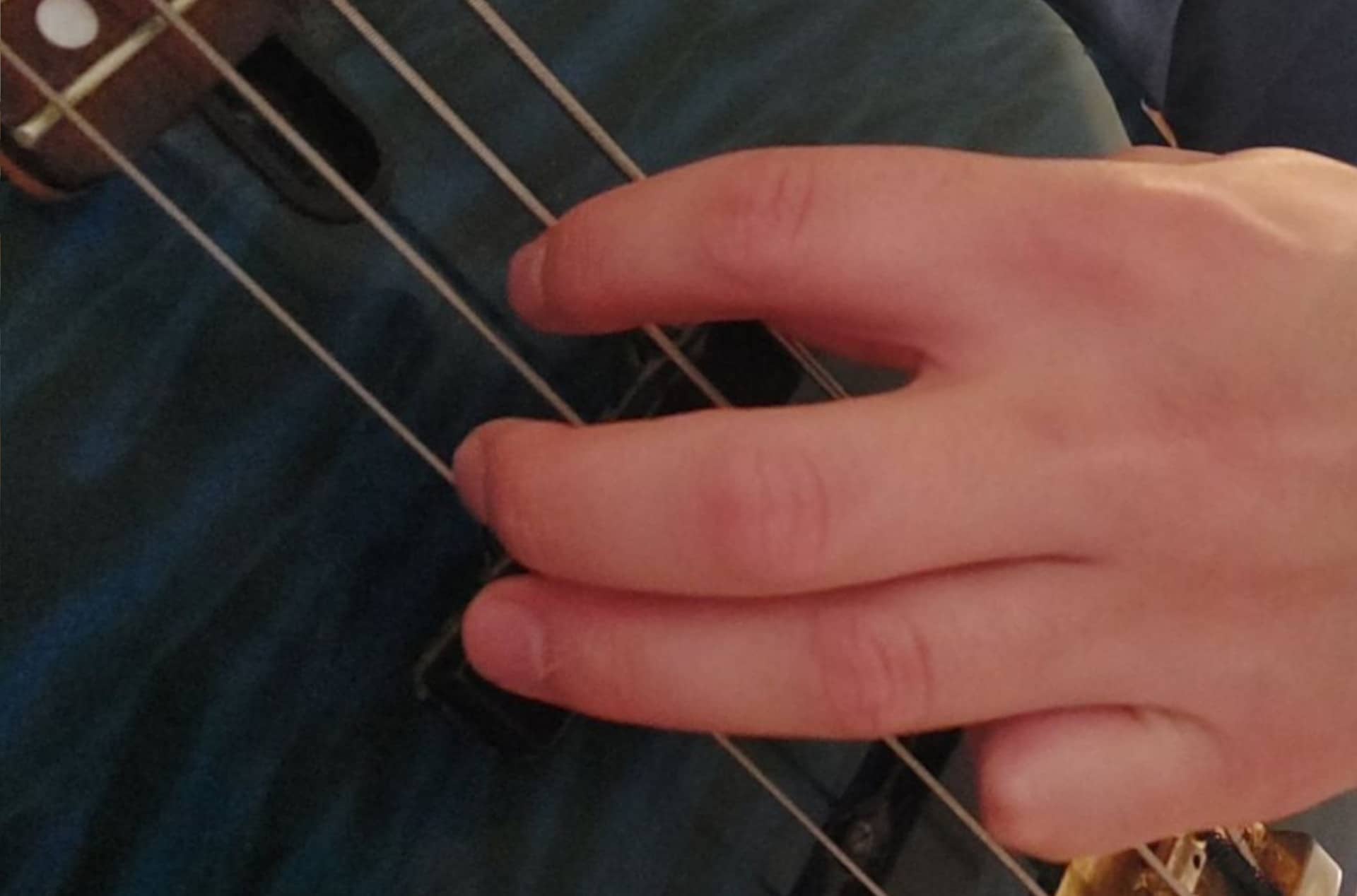In general, the bass is played one string at a time. The instrument is meant to provide low end in a band and single notes are enough to get the job done. But why are bassists not playing chords, and what happens if you try strumming a bass?
The bass guitar can be strummed. However, due to chords sounding muddy at lower frequencies, most bassists elect to not do so. When bassists strum the bass they generally play at higher ranges and use a clear tone that helps chords cut through the mix.
Strumming the bass well requires a solid plucking technique. It also requires you to find a fitting tone that makes chords work within the context of a band. Lastly, you need to understand when strumming adds something to a song, and when it detracts from it.
I`ve used chords in my playing in both indie-rock and metal. It took me a when strumming actually added something to a song, and when it only added noise. Thus, I decided to write this guide to teach you what I’ve learned and to prevent you from making the mistakes I did.
You will learn when chords can be used, and how to strum the bass. I will also show you 10 bassists who have used strumming in different ways. This will prevent you from making some common beginner mistakes when it comes to strumming, which will ultimately speed up your progress as a bassist.
Can you strum a bass guitar?
A bass guitar can be strummed to add both power and harmony to a song. While strumming is a less common technique due to the bass guitar`s low range, bassists have strummed the instrument to great effect in genres such as rock, metal, punk, funk, and jazz.
Bass chords tend to sound muddy (and you can learn why here). The vast majority of bands want to avoid this type of muddiness as it makes their overall mix messy and incoherent due to the bass taking up too much unnecessary space.
You can avoid this by playing higher chords, as these sound clearer. However, if you avoid low frequencies altogether, you risk not doing your job as a bassist as your playing will lack low end.
Thus, the main challenge of strumming the bass is to avoid a muddy sound, while still providing enough low end in a song.
This issue can be solved by using chords sparingly or as part of a riff. Chords are also more forgiving when used in intros, solo bass parts, or in bands with 2 bassists.
Les Claypool of Primus and Ryan Martine of Mudvayne are two bassists that are great at using chords intermittently. They use strumming at spots where it does not feel obstructing for the guitar part, which allows them to get away with strumming chords, even at deeper ranges.
On “Snow (Hey Oh)” and “Don’t Forget me” Flea of Red Hot Chili Peppers strums his bass similar to how a guitar player would. This adds a lot of harmony to the songs and allows for some melodic guitar parts because the bass is filling in enough of the rhythm.
Lemmy of Motörhead on the other hand uses bass chords to make his playing noisier. He also adds distortion which adds even more power and noise to his playing, which fits with the overall sound of his band. Bear in mind that he generally still plays relatively high up on the bass. While he prefers a distorted and noisy tone, even he usually avoids low bass chords.

How do you strum a bass guitar?
A bass guitar can be strummed with your fingers, your thumb, or with a pick. Strumming with your thumb produces a warmer and soft sound while playing with a pick produces a more aggressive sound with more attack. Plucking with your fingers gives a bit of both, especially when utilizing up and down strokes.
Let`s take a quick look at these three main bass strumming techniques and their strengths and weaknesses:
Strumming with a pick
Notable bassists: Chris Squire, Lemmy, Peter Hook
Whether you decide to strum with a pick or not largely depends on whether you already play with a pick or with your fingers.
Playing single notes with a pick helps in articulating notes and giving a more pronounced attack. Strumming with a pick is no different and provides a similar sound, even when playing multiple strings.
Related reading: Are bass and guitar picks the same?
I’ve found it much easier to strum the bass with a pick than my fingers, despite mainly being a fingerstyle player. This is a sentiment that many bassists I’ve spoken to have agreed with. The reason for this is that it is easier to keep unplayed strings muted and to move your plucking hand in a fluid motion when strumming.
Strumming with your fingers
Notable bassists: Geddy Lee, Les Claypool, Steve Harris
In order to strum the bass with their fingers, bassists generally use 1 to 4 fingers to stroke the strings upwards and downwards. The Index finger tends to always be used, many use their middle finger as well, some add the ring finger, and while less common some use their ring finger too.
The strings are generally hit with the fingernails on the way down, and with the skin of the fingers on the way up. This produces a distinct sound where every other strummed chord has a different character to it. Downstrokes are more clanky and aggressive, while upstrokes have a softer sound.
Bonus tip: I recommend resting your thumb on the highest unplayed string when strumming with your fingers. This will make it easier to keep strings muted and control your strumming.
It is possible to only use up or downstrokes, but it greatly limits how fast you can strum. It is also possible to trim your fingernails to the point where you hit the strings with the skin of your finger, but this requires a lot of precisions. I have tried this in the past and found it hard to strum the strings the way I wanted, not to mention that it felt uncomfortable.
Thus, expect to spend more time practicing strumming with your fingers than if you were playing with a pick.
Strumming with your thumb
Notable bassists: Victor Wooten, Jonas Hellborg
Using your thumb produces a warm sound, and is a less common way to strum the bass. It can also create an inverse tone to using your fingers, as you can strum the strings with the skin of your thumb on the downstroke, and the nail on the upstroke.
In my experience, it is an easy technique to learn, but one that is hard to master. If you have never strummed a bass before, you might find that using your thumb will be the easiest way to do it at first. However, it quickly becomes difficult when trying to strum faster.
Using the thumb has been used by bassists like Victor in incredibly complex basslines. However, at its core strumming with the thumb is well suited for slower, calm, and emotional songs due to the warm tone it produces.
Bassists who strum the bass
The best way to incorporate strumming into your playing is to listen to bassists who have done it successfully first.
Therefore I made this list of 10 bassists in various genres that have strummed the bass in various ways. While many of them play rock, the type of rock and the way they strum the bass varies greatly:
| Bassist | Band | Genre | Songs with strumming |
| Les Claypool | Primus | Rock | Tommy The Cat, Too Many Puppies |
| Flea | Red Hot Chili Peppers | Funk / Rock | Snow, Don`t Forget Me |
| Stanley Clarke | Solo | Rock | School Days |
| Lemmy | Motörhead | Rock | Ace of Spades, Overkill |
| Mark Hoppus | Blink-182 | Pop-Punk | Always, Carousel |
| Steve Harris | Iron Maiden | Metal | Powerslave |
| Joe Lester | Intronaut | Progressive Metal | Australopithecus, City Hymnal |
| Fat Mike | NOFX | Punk | The Decline |
| Ryan Martinie | Mudvayne | Metal | Determined, Not Falling |
| Peter Hook | Joy Divison | Rock | Love Will Tear Us Apart, She`s Lost Control |

How do you get better at strumming bass?
In order to get better at strumming the bass, you need to practice with a metronome. Start by getting comfortable at strumming chords and keeping unplayed strings muted at a slow pace before gradually moving to faster tempos.
Strumming the bass well is difficult. However, you can become great at it by following some basic practice techniques.
- Use a metronome – Practicing with a metronome is always a good idea when learning the bass. When learning to strum the bass it is completely paramount. It will help you keep time, but also help you notice how fast you can strum the bass in a controlled manner. Start with a slow tempo such as 60BPM. Then as you get comfortable with your strumming switch to a slightly faster tempo till you master that, and repeat. I prefer this Metronome, as it has a clear sound and teaches you what different tempos are called.
- Focus on keeping unplayed strings muted – When strumming the bass, it is easy to accidentally hit an unwanted string. Focus on being precise with your wrist and your pick, thumb, or fingers, till you feel in control of which strings you are plucking. Always make sure that you are in full control of what strings are ringing out before you move on to faster tempos.
- Work on your tonal control – Chords can be utilized in both heavy and calm songs. It is thus important that you practice playing chords softly and aggressively. Practice playing chords as soft as you can without them sounding sweep-picked or arpeggiated. Then, practice strumming them aggressively while remaining in control of your hand and without extra strings ringing out. This will prepare you for utilizing chords in different types of songs and improve your control.
Conclusion
Strumming the bass sounds best when it’s done sparingly. However, doing so at the right spots not only elevates your own playing but a song as a whole.
Using a pick, your fingers, or your thumb to strum the bass are separate skills, and all produce different tones. You can practice all 3 techniques by mastering strumming at slower tempos and gradually moving up.
It is best to stay away from the lowest ranges of the bass when strumming. When played too low chords will sound unclear, and even Lemmy who loves a noisy and distorted sound tends to steer away from the low E string.
As you start incorporating strumming into your playing always make sure that the chords are contributing something to a song. You will come to find that oftentimes you are better off just playing single notes.
However, in time you will get better at finding spots where chords will elevate a song, and as you start incorporating strumming your playing will become more distinct and noticeable.
The easiest way to incorporate strumming into your playing is to use power chords. I have written about power chords for the bass here. This article will teach you what power chords are, how to use them, why they work and showcases 10 bassists that use them.

